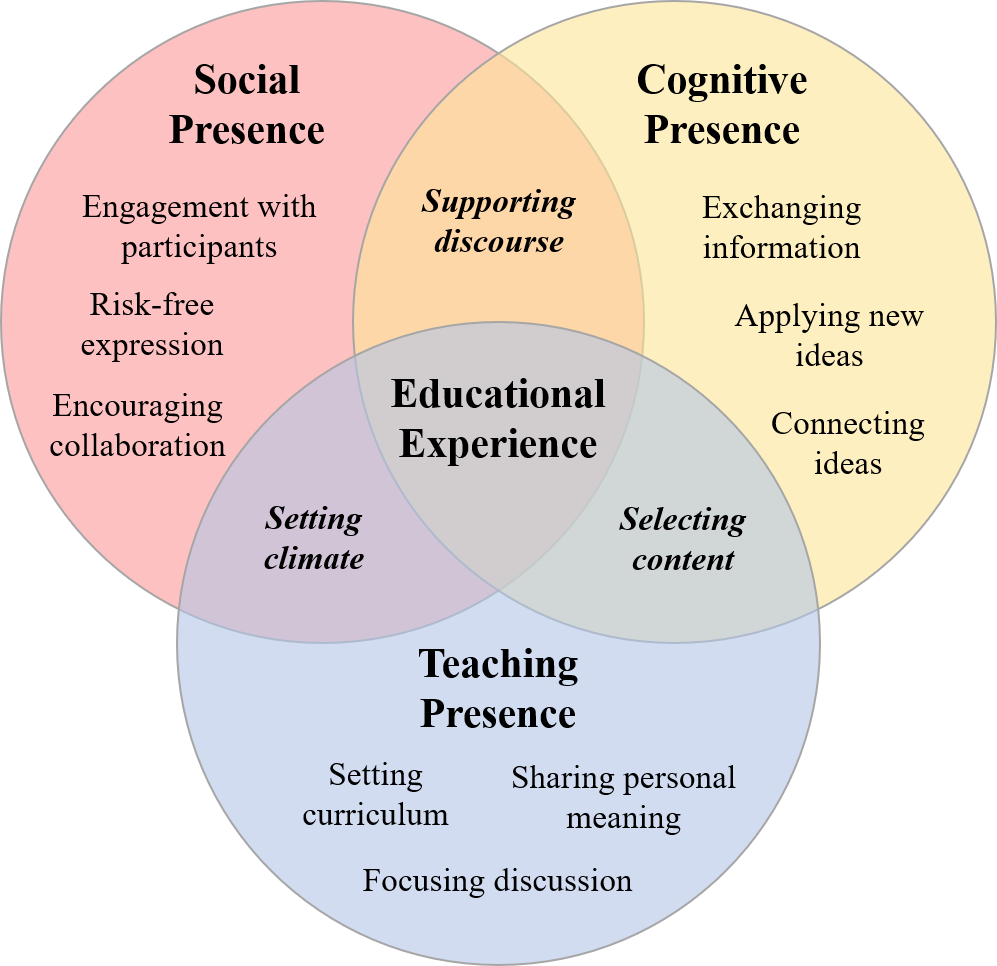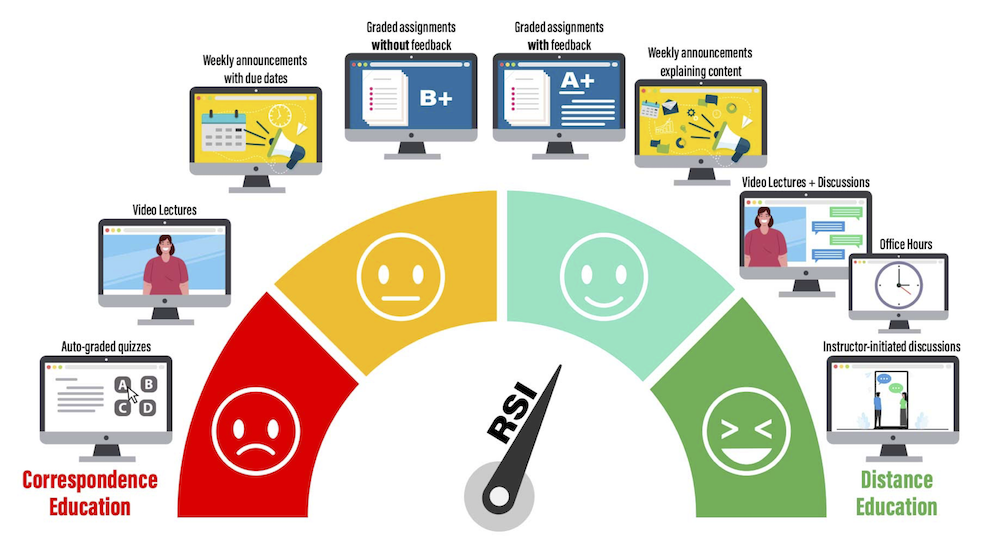8.1 Instructor Presence
Course design should promote instructor presence to include opportunities to engage with students, frequent communication
Examples include formative feedback, regular course announcements, motivational messages, participation in discussion forums, one-on-one meetings with students.
Points: 3 (Essential)
Alignment: RI – SACS, SI – SACS
Overview
Establishing a community of inquiry in your online course is key to student success and well-being. This involves a balance of 3 types of presence: teaching (or instructor) presence, social (or student) presence, and cognitive (or content) presence, as illustrated in the diagram below. In this standard, the focus is on the first type: instructor presence. Faculty-student interaction is especially critical for student learning. A single interaction with a faculty member can greatly influence a student’s motivation and decisions on whether to persevere in a course or major.

From the Community of Inquiry Model site:
- Social presence is “the ability of participants to identify with the community (e.g., course of study), communicate purposefully in a trusting environment, and develop interpersonal relationships by way of projecting their individual personalities” (Garrison, 2009, p. 352).
- Teaching Presence is the design, facilitation, and direction of cognitive and social processes for the purpose of realizing personally meaningful and educationally worthwhile learning outcomes (Anderson, Rourke, Garrison, & Archer, 2001).
- Cognitive Presence is the extent to which learners are able to construct and confirm meaning through sustained reflection and discourse (Garrison, Anderson, & Archer, 2001).
Regular and Substantive Interaction Law
Furthermore, instructor and student presence is what differentiates an online course from a correspondence course. In a correspondence course, students may just complete work self-paced, with no interaction with an instructor or even other students. In order to legally differentiate the two types of courses for the purposes of providing student aid and accreditation, a law was passed requiring that online course involve faculty-to-student and student-to-student interactions: Regular and Substantive Interaction (RSI), hence the inclusion of standards such as this one related to RSI.
Students thrive with engaged and involved faculty. This legislation addresses that by saying we must provide opportunities for regular and substantive interaction. Interaction must be initiated by the instructor, regular and frequent, and substantive (of an academic nature). Engaging students in teaching, learning, and assessment, consistent with the content under discussion, and include at least two items from the checklist.
This RSI diagram has more details and examples:

Ways to Meet Standard 8.1
-
Providing direct instruction;
-
Assessing or providing feedback on a student’s coursework;
-
Providing information or responding to questions about the content of a course or competency;
-
Facilitating a group discussion regarding the content of a course or competency; or
-
Other approved instructional activities.
-
Office hours can count if students are invited based on individual content needs, such as a review/explanation of incorrect homework questions.
Tips
- Send regular announcements to your classes. If you refer to an assignment or module, consider linking directly to it in the message, so students don’t have to hunt for it.
- Use the Message Students Who feature in the gradebook to reach out to students who have not yet turned in an assignment or who struggled on a quiz or exam. Several research studies have shown that these types of messages and nudges can have a major influence on student success.
- If you have a discussion activity, reply to some or all of the students who have posted to show that you are engaged and give them positive feedback on their learning. See some research backing this: “Can online discussions benefit students’ learning in online courses?”
-
“Our empirical evidence demonstrated that online discussions can significantly benefit students’ exam performance in online courses only when instructors are effectively engaged in discussions. Instructors who do not effectively engage in online discussions had a less than significant effect on students’ exam performance even when peer-responses were required.”
-
- Meet with students one-on-one or in small groups in Microsoft Teams
- Offer virtual office hours via Microsoft Teams and/or offer appointment slots in the Canvas Calendar or Outlook Calendar.
Examples
- Regular and Substantive Interaction Policy & Examples – from HCC
- The Community of Inquiry Model checklist has several example activities for teaching, social, and cognitive presence
- Sample post-exam message
Resources
- Regular and Substantive Interaction
- Course Design with RSI in Mind
- Canvas
- Articles, Presentations
- Research
- The Indicators of Instructor Presence that are Important to Students in Online Courses
- Fostering Cognitive Presence in Online Courses: A Systematic Review
- Teaching and social presences supporting basic needs satisfaction in online learning environments: How can presences and basic needs happily meet online?
- Well-being and student–faculty interactions in higher education
- Building bridges in higher education: Student-faculty relationship quality, student engagement, and student loyalty
- How Do Online Course Design Features Influence Student Performance?

